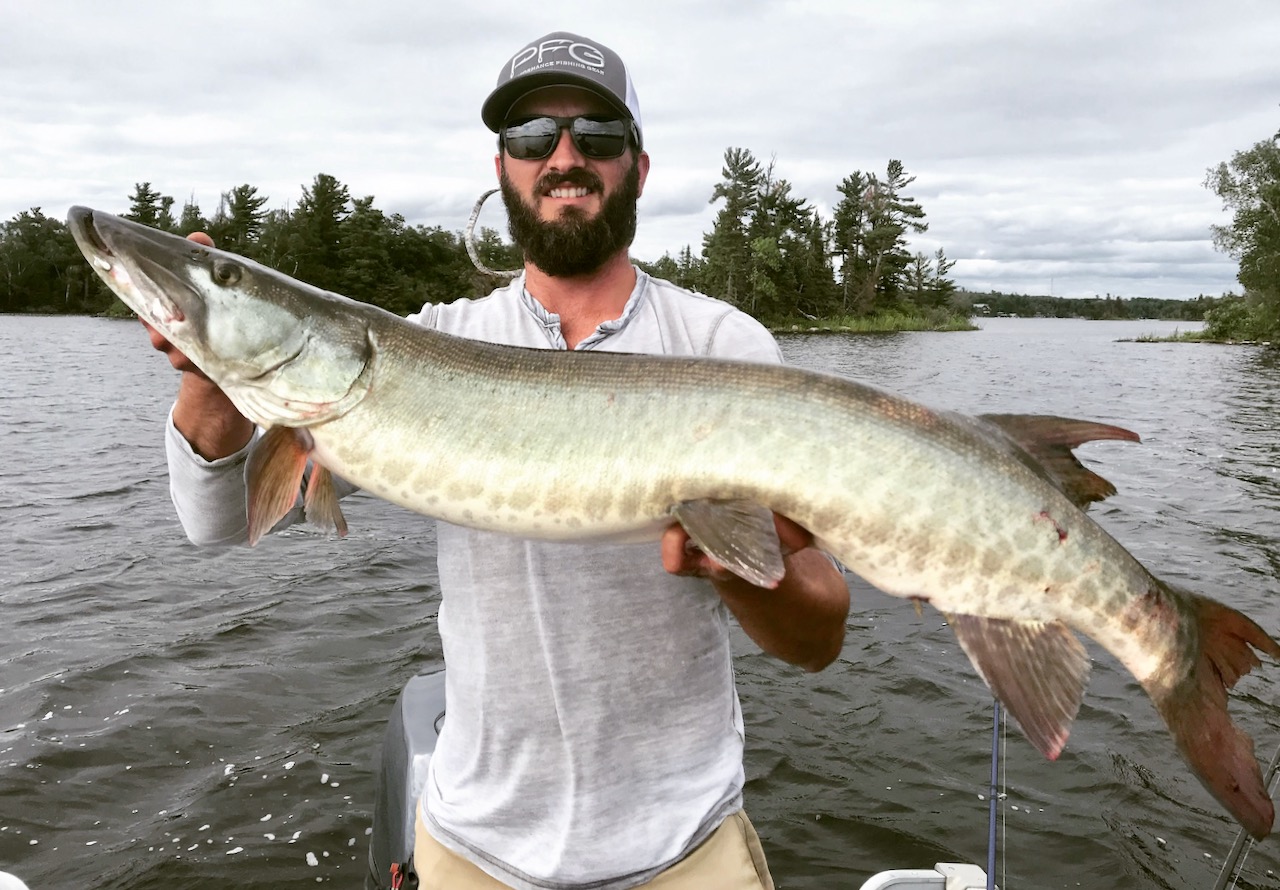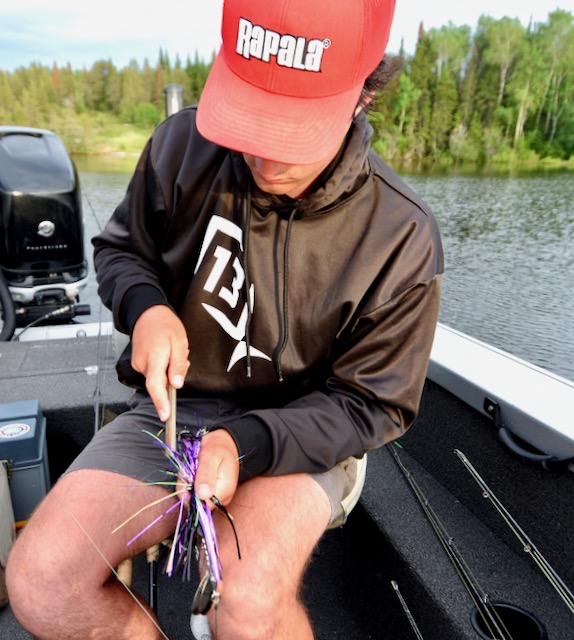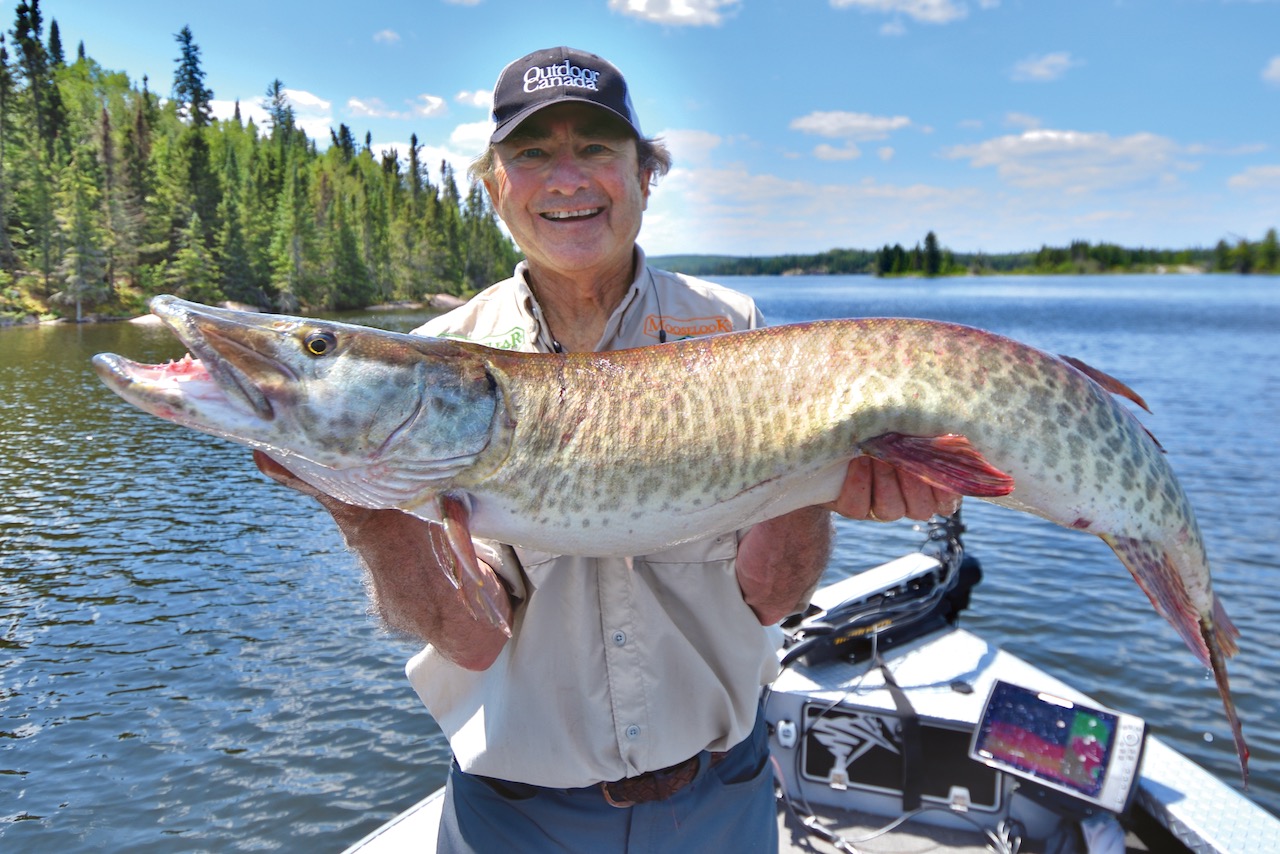A MIND FOR MUSKIES
To commemorate Outdoor Canada’s 50th anniversary, our expert fishing editor reveals his 50 top secrets for hunting monster muskellunge
Advertisement

#11 Muskie fishing is a visual sport, so don’t cheap out on your polarized sunglasses. You need to be able to spot followers in dark water, pick out individual underwater rocks in windy conditions and manipulate your lure when you have a follower, among other tasks.
#12 Have you ever noticed how many giant hooks dangle from the average muskie lure? It’s absolutely ridiculous. I almost always remove the middle treblehook from my bucktails, as it becomes a grass magnet when I’m fishing over weeds.
Advertisement
#13 When the action is heating up, use complementary bait styles. If you see the fish favouring bucktails, for example, throw a chopper-style topwater. The same goes if they’re eating glide baits—that’s the time to throw a walking-style surface lure.

#14 You typically get just one chance a day—if you’re lucky—to catch a big muskie, so keep your hooks sharp. Bumped a rock? Sharpen them. Caught a fish? Sharpen them. When a muskie clamps down on your bait, it’s hard to set the hooks, so they need to be up to the task.
Advertisement
#15 I can’t tell you how many people I’ve seen hook a fish and start fumbling with their drag. Set it properly before you make a cast, not after you hook a giant. You have to be thinking ahead with muskies. I like my drag on the tight side.
#16 A muskie’s summer home range is small, with the fish moving among its various prime structures and pieces of cover. Through trial and error, learn the specific weather and water conditions that drive the fish to use each area.
Advertisement
#17 I keep a well-organized release station at the back of my boat, complete with a bump board, jaw spreaders, pliers and cutters. It makes for efficient and effective releases, and keeps everyone safe—including the fish. Mess it up and I’ll throw you in the lake.
#18 When I’m fishing a deep-water muskie location, I always throw a big bait, especially a surface lure. I pitch smaller presentations on shallower structures, but you’re fighting the odds with those on deep locations. Base your lure size on the depth of the structure or cover.
#19 Muskie fishing solo is sometimes the most productive. I love it because I don’t get distracted by small talk and I stay focused. I watch behind my bait for followers and I figure eight after every cast, so if I miss a fish, I have no one to blame.
#20 I always keep three rods rigged with three different presentations: a topwater, a mid-depth lure and a bottom-straining bait. I never leave a spot without testing each option. I can’t tell you how many times I’ve presented two of the lures, only to catch a Goliath on the third.

